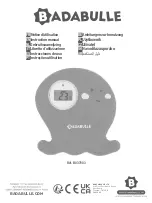
c03.fm
Planning a OpenScape Cordless IP System
Propagation Conditions for Radio Traffic
A31003-C1020-S100-03-7620, 12/2017
OpenScape Cordless IP V2, Service Documentation
35
–
obstructions with strong absorption qualities (brick walls, dividing walls,
ceilings, furniture, steel cabinets, bathroom units, elevators, wire-
reinforced glass, leaded windows, blinds and others)
–
reflective stationary obstructions (brick buildings, reinforced concrete
buildings, buildings with metal sheathing)
–
reflective moving obstructions (people, animals, vehicles)
3.3 Propagation Conditions for Radio Traffic
Radio wave propagation in the DECT frequency range is quasioptical. This
means that a wave is hindered in its propagation if it hits a solid surface and is
thereby reflected to a greater or lesser extent. This reflection is dependent on the
physical qualities of the medium.
In the case of conductive materials, the penetration depth into the medium is
determined mainly by the magnetic quality and the electrical conductivity.
•
Metals with a high degree of conductivity
These include copper or steel and prevent most DECT frequency radio waves
from penetrating, reflecting them in the same way as a mirror reflects light.
•
Modern construction materials (exceptions, see above)
These have relatively poor conductivity levels with the result that
electromagnetic waves, even if attenuated, still can pass through.
Thus, radio traffic is possible within and through buildings.
•
Attenuation qualities
of the construction materials vary greatly resulting in different ranges
depending on the propagation direction and the construction material
penetrated.
This attenuation is mitigated by openings, especially by windows in the
buildings as long as they do not have wire-reinforced or metal-plated glass.
The different levels of radio propagation give rise to various scenarios in which
radio cells are formed:
•
in the open with visibility
•
industrial sites with reinforced concrete buildings and buildings with metal
facades
– Wood (dry and unprocessed),
glass, plastics (N-conductor)
negligible attenuation
– Brick walls,
wood (damp and processed, for example,
particle board)
medium range of attenuation
– Reinforced concrete, glass with metal
reinforcement/coating
greatest attenuation
















































